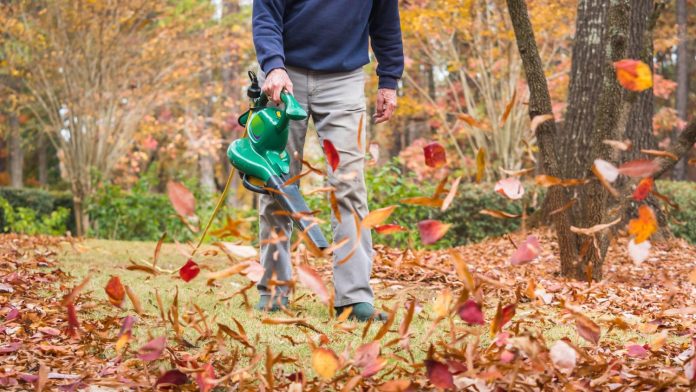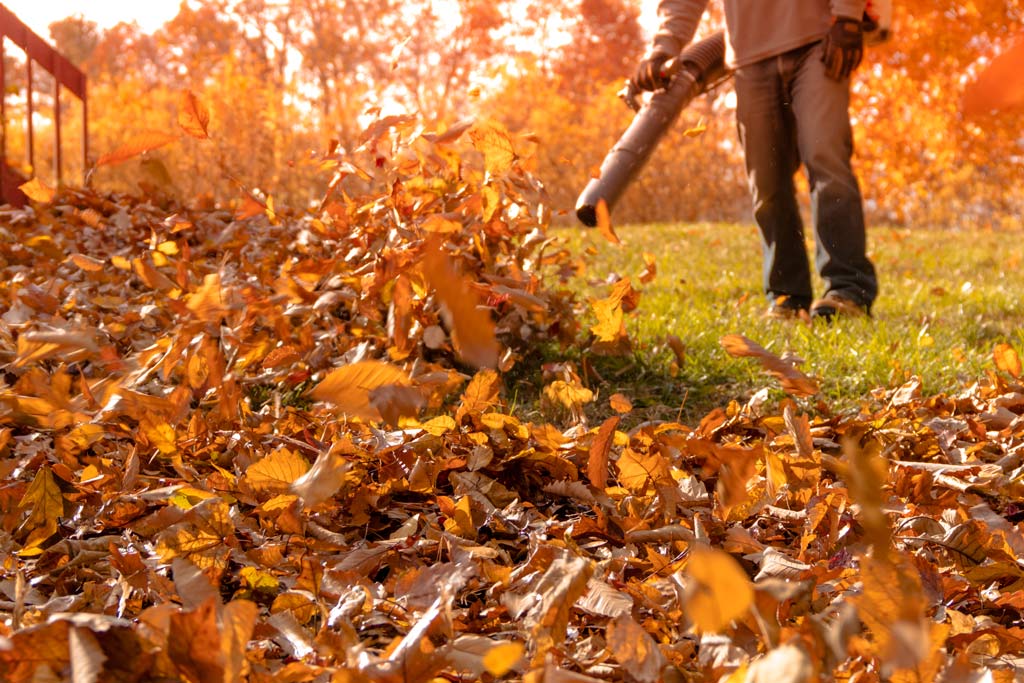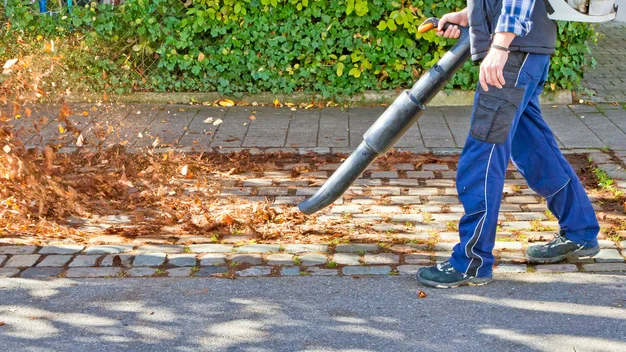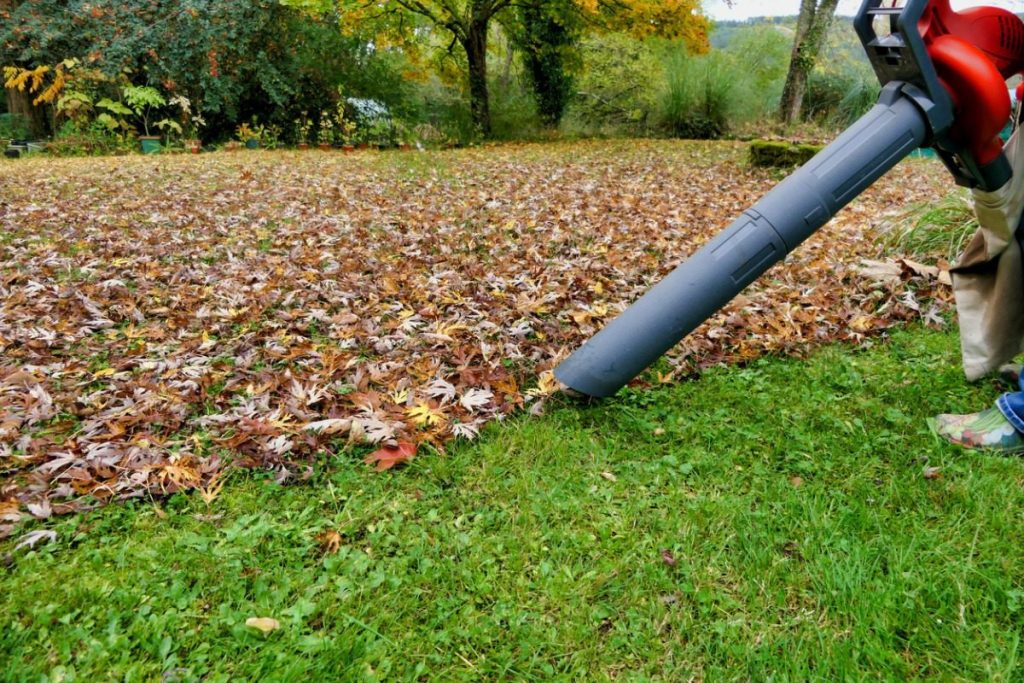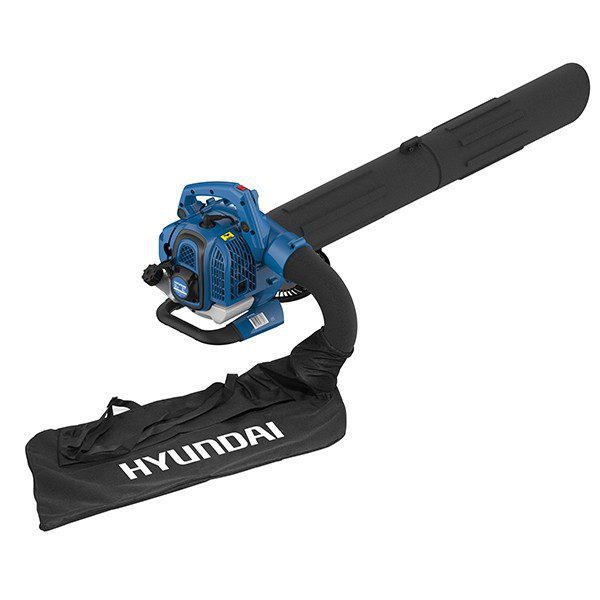You’ve been staring at your expansive lawn, covered in a colorful carpet of fallen leaves, wondering how to tackle clearing them.
As you contemplate your options, the question arises: are leaf blowers effective for clearing leaves from grassy areas? We all know leaf blowers can make quick work of clearing leaves from hard surfaces, but what about the challenging terrain of a grassy yard?
In this article, we’ll explore the effectiveness of leaf blowers in tackling this specific task and provide insights on how to make the most of this handy tool for a leaf-free lawn.
Types of Leaf Blowers
Gas-powered leaf blowers
Gas-powered leaf blowers are a popular choice for homeowners and professionals alike. They are typically more powerful than electric or battery-powered blowers, ideal for more significant properties or areas with many leaves. Gas blowers run on a mixture of gasoline and oil and require regular maintenance to ensure proper functioning.
Electric leaf blowers
Electric leaf blowers are a convenient option for those who prefer a quieter, more eco-friendly alternative to gas blowers. They are powered by electricity and can be either corded or cordless. Corded electric blowers provide consistent power but are limited by the length of the extension cord. Cordless electric blowers offer more mobility but may have a shorter battery life.
Battery-powered leaf blowers
Battery-powered leaf blowers provide a good balance between power and convenience. They are cordless and rely on rechargeable batteries for power. Battery blowers are typically less noisy than gas blowers and do not produce emissions, making them an environmentally friendly choice. However, their runtime may be limited by the battery capacity, requiring occasional recharging.
Advantages of Leaf Blowers
Efficiency in leaf clearing
Leaf blowers are highly efficient tools for clearing leaves from grassy areas. Their powerful airflow can quickly move large quantities of leaves, saving time and effort compared to traditional methods like raking. They are instrumental in areas with a dense accumulation of leaves, such as during the fall season.
Time-saving
One of the most significant advantages of leaf blowers is their ability to save time. With their powerful airflow, you can clear a large grass area in a fraction of the time it would take to manually rake leaves. This time-saving feature is particularly beneficial for individuals with busy schedules or those with a large property to maintain.
Versatility
Leaf blowers offer versatility in multiple ways. They can be used not only for clearing leaves from grassy areas but also for cleaning sidewalks, driveways, and other hard surfaces. Some blowers come with attachments or features like vacuuming and mulching capabilities, allowing you to gather and mulch the leaves in one go.
Disadvantages of Leaf Blowers
Noise pollution
One of the main disadvantages of leaf blowers is the noise they generate. Gas-powered blowers, in particular, can produce loud noise levels that may disturb you, your neighbors, and even wildlife. Electric blowers are generally quieter, but they still emit some noise. It is important to consider noise regulations in your area and be mindful of the noise you create while using a leaf blower.
Environmental impact
Leaf blowers, especially gas-powered ones, can hurt the environment. Gas blowers emit pollutants into the air and contribute to air pollution. They also consume and release fossil fuels, contributing to greenhouse gas emissions and climate change. Electric and battery-powered blowers are more environmentally friendly as they produce fewer emissions, but their electricity consumption should still be considered.
Dust and debris dispersion
A common complaint about leaf blowers is the dispersion of dust and debris. When blowing leaves, small particles and dust are often stirred up and can be inhaled or settled on nearby surfaces. This may be a concern for individuals with respiratory conditions or allergies. To minimize dust dispersion, using a blower with a nozzle attachment or considering alternative methods like mulching or raking is recommended.
Effectiveness of Leaf Blowers on Grass
Efficiency on dry leaves
Leaf blowers are highly effective in removing dry leaves from grassy areas. The powerful airflow quickly lifts the leaves, allowing you to direct them where you want them to go. The speed and efficiency of leaf blowers make them an excellent choice for maintaining clean and tidy grass, especially during the fall season when leaves accumulate.
Effectiveness on wet leaves
While leaf blowers perform well on dry leaves, they may struggle with wet leaves. Wet leaves tend to be heavier and clump together, making it more challenging for the blower’s airflow to lift and move them effectively. In such cases, using a higher-powered blower or resorting to alternative methods like raking or mulching may be necessary.
Ability to clear tall grass
Leaf blowers are not specifically designed to clear tall grass but can still be somewhat effective. The airflow generated by the blower can help dislodge and move leaves from the top of tall grass. However, it is essential to note that the efficiency may vary depending on the thickness and height of the grass. When tall grass is a concern, using a leaf blower alongside other grass maintenance tools may yield better results.
Best Leaf Blowers for Grass Clearing
High-powered gas blowers
High-powered gas blowers are the go-to choice for clearing leaves from grassy areas, especially for large properties or areas with heavy leaf coverage. Gas blowers provide strong and consistent airflow, allowing you to move leaves over large areas efficiently. However, it is essential to consider the noise and environmental impact associated with gas blowers.
Lightweight electric blowers
Lightweight electric blowers are an excellent option for smaller properties or individuals who prioritize convenience and eco-friendliness. They are less potent than gas blowers but offer sufficient airflow to clear leaves from grassy areas. Electric blowers are generally more affordable, require less maintenance, and produce less noise and emissions.
Battery-powered blowers with adjustable settings
Battery-powered blowers with adjustable settings provide versatility and convenience. These blowers allow you to adjust the speed and airflow according to the type of leaves or grass you are dealing with. They are cordless, eliminating the need for an extension cord, and are typically lighter than gas blowers. Battery blowers are a quieter and more environmentally friendly alternative, although the battery capacity may limit their runtime.
Recommended Operating Techniques
Blowing in the direction of the wind
When using a leaf blower, it is best to blow the leaves in the direction of the wind. This technique helps to maximize the efficiency of the blower’s airflow and ensures that the leaves are carried away from the area you are clearing. Blowing against the wind can make the task more challenging, as the leaves may return to the grass or blow back at you.
Using a sweeping motion
Use a sweeping motion with the blower to clear leaves from grassy areas effectively. Start from one side and work your way across, moving the blower back and forth in an arc-like motion. This technique helps cover a larger area and ensures no leaves are left behind.
Blowing leaves onto a tarp or into piles
Consider blowing the leaves onto a tarp or into piles to make leaf cleanup easier. Directing the leaves onto a tarp allows you to gather and dispose of them in one go. Alternatively, blowing the leaves into piles allows for more accessible collection and bagging.
Maintenance Tips for Leaf Blowers
Regular cleaning
Regular cleaning is essential for keeping your leaf blower in optimal condition. After each use, remove any debris or leaves that may have accumulated in the blower’s intake or nozzle. It is also essential to clean or replace the air filters as the manufacturer recommends. Regular cleaning helps prevent clogs, ensures proper airflow, and extends the life of your blower.
Proper fuel and oil mixture
Use the recommended fuel and oil mixture if you have a gas-powered blower. Incorrect fuel ratios can lead to engine damage and poor performance. Always read the manufacturer’s instructions and follow the recommended fuel mixture for your specific blower.
Sharpening or replacing blower blades
Over time, the blades or impellers of your leaf blower may become dull or damaged. Sharpening or replacing the blades as needed will help maintain the blower’s efficiency in moving leaves. Consult the manufacturer’s instructions or contact a professional for guidance on blade maintenance.
Safety Considerations
Wearing protective gear
When operating a leaf blower, wearing the necessary protective gear is essential. This includes safety glasses or goggles to protect your eyes from debris or dust, ear protection to reduce noise exposure, and sturdy shoes to protect your feet. Wearing long pants, sleeves, and gloves can also provide additional protection.
Avoiding obstacles
Be mindful of potential obstacles while operating a leaf blower. Look for rocks, branches, or other objects hidden in the grass. Blowing leaves onto hard surfaces like concrete or asphalt should also be done cautiously to avoid damage or injury.
Being cautious of bystanders
Be aware of your surroundings and any bystanders nearby when using a leaf blower. The powerful airflow generated by the blower can blow debris or dust in unexpected directions. It is essential to maintain a safe distance from others and avoid pointing the blower directly at people or animals.
Alternatives to Leaf Blowers for Grass Clearing
Raking
Raking is a traditional and effective method for clearing leaves from grassy areas. While it may be more time-consuming and labor-intensive than a leaf blower, raking allows for more control and precision. Raking is also a quieter and more environmentally friendly option.
Mulching
Mulching is another alternative to leaf blowers. Mulching involves using a lawnmower or dedicated mulching machine to shred the leaves into smaller pieces. The shredded leaves are then left on the grass, where they decompose and provide nutrients to the soil. Mulching reduces the need for leaf removal and helps enhance the health of the grass.
Composting
Composting is a sustainable way to manage leaves and other organic waste. Creating a compost pile or using a compost bin can transform the leaves into nutrient-rich compost used in your garden or landscaping. Composting reduces waste, improves soil quality, and promotes a healthy ecosystem.
Conclusion
Leaf blowers are practical tools for clearing leaves from grassy areas, offering efficiency, time-saving benefits, and versatility. Gas blowers provide high power but may generate more noise and have a more significant environmental impact. Electric and battery-powered blowers are quieter and more eco-friendly options, although they may have limitations in power and runtime.
To effectively clear leaves, it is recommended to use proper techniques, such as blowing in the direction of the wind and using a sweeping motion. Regular maintenance, wearing protective gear, and considering alternative methods like raking, mulching, or composting are essential for safe and sustainable leaf clearing.
Ultimately, the choice of leaf blower and method will depend on the size of the area, the type of leaves, and personal preferences.

